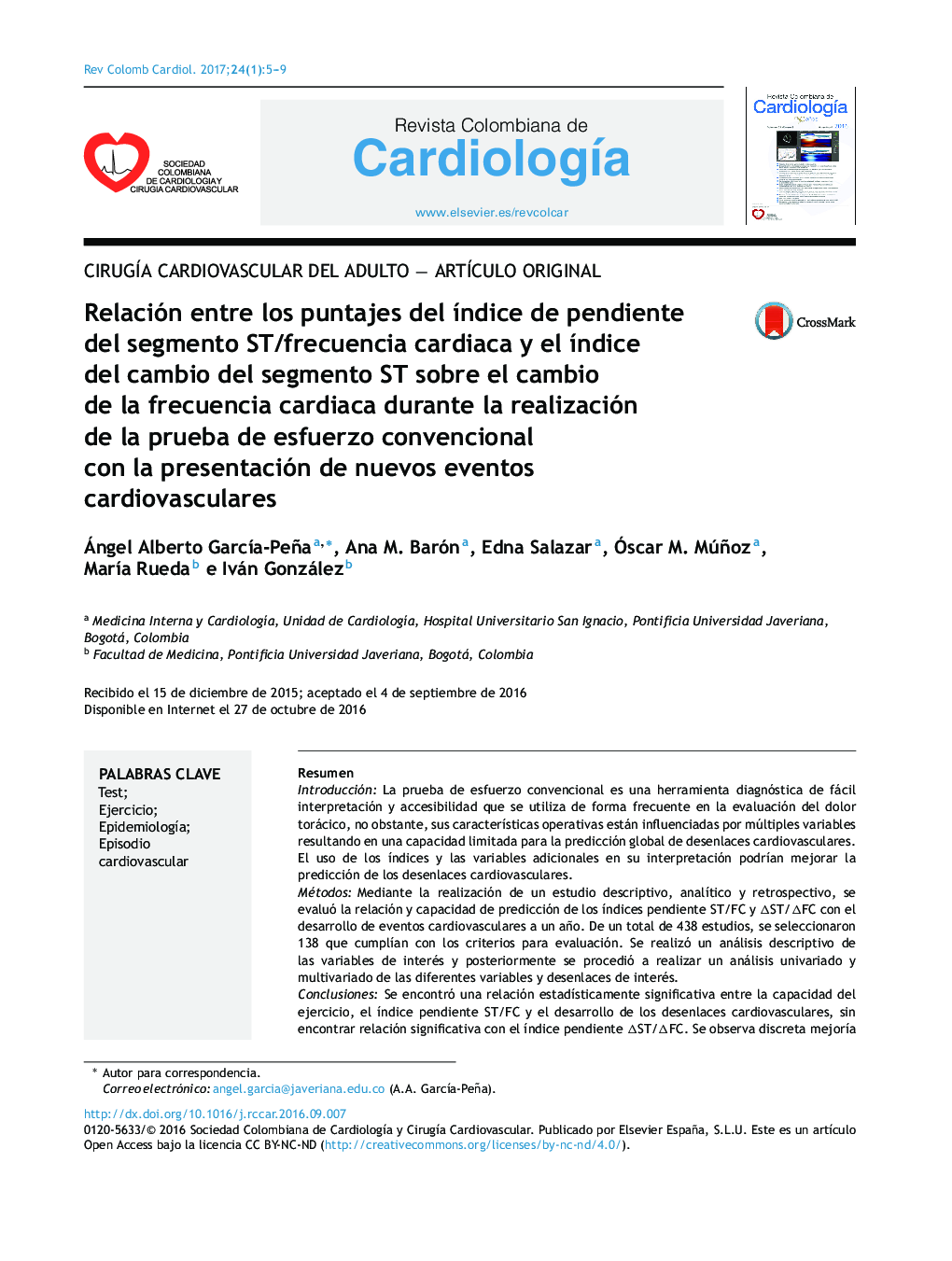| Article ID | Journal | Published Year | Pages | File Type |
|---|---|---|---|---|
| 5620428 | Revista Colombiana de Cardiología | 2017 | 5 Pages |
ResumenIntroducciónLa prueba de esfuerzo convencional es una herramienta diagnóstica de fácil interpretación y accesibilidad que se utiliza de forma frecuente en la evaluación del dolor torácico, no obstante, sus caracterÃsticas operativas están influenciadas por múltiples variables resultando en una capacidad limitada para la predicción global de desenlaces cardiovasculares. El uso de los Ãndices y las variables adicionales en su interpretación podrÃan mejorar la predicción de los desenlaces cardiovasculares.MétodosMediante la realización de un estudio descriptivo, analÃtico y retrospectivo, se evaluó la relación y capacidad de predicción de los Ãndices pendiente ST/FC y ÎST/ÎFC con el desarrollo de eventos cardiovasculares a un año. De un total de 438 estudios, se seleccionaron 138 que cumplÃan con los criterios para evaluación. Se realizó un análisis descriptivo de las variables de interés y posteriormente se procedió a realizar un análisis univariado y multivariado de las diferentes variables y desenlaces de interés.ConclusionesSe encontró una relación estadÃsticamente significativa entre la capacidad del ejercicio, el Ãndice pendiente ST/FC y el desarrollo de los desenlaces cardiovasculares, sin encontrar relación significativa con el Ãndice pendiente ÎST/ÎFC. Se observa discreta mejorÃa de la capacidad de predicción global de la prueba de esfuerzo convencional con la adición del Ãndice pendiente ST/FC (AUC 0,70 a AUC 0,74).Relationship of ST segment/heart rate slope index and ST segment change index scores on the heart rate change during conventional stress test with the presentation of new cardiovascular events.
IntroductionConventional stress test is a diagnostic tool easy to interpret and of easy access frequently used in the assessment of chest pain; however, its operational characteristics are influenced by multiple variables, resulting in a limited ability for global prediction of cardiovascular outcomes. The use of indexes and additional variables in their interpretation could improve prediction of cardiovascular outcomes.MethodsBy conducting a descriptive, analytical and retrospective study, the relationship and prediction ability of the slope ST/HR and ÎST/ÎHR indexes with the development of cardiovascular events were assessed at one year. Out of a total of 438 studies, 138 were selected that complied with the evaluation criteria. A descriptive analysis of the variables of interest was carried out, and later on a univariate and multivariate analysis of the different variables and outcomes of interest.ConclusionsA statistically significant relationship was found between exercise capacity, ST/HR slope index and the development of cardiovascular events, without findings of a significant relationship with the ÎST/ÎHR slope index. A discreet improvement of the global prediction capacity of the conventional stress test with the addition of the ST/HR slope index (AUC 0.70 to AUC 0.74) is observed.
